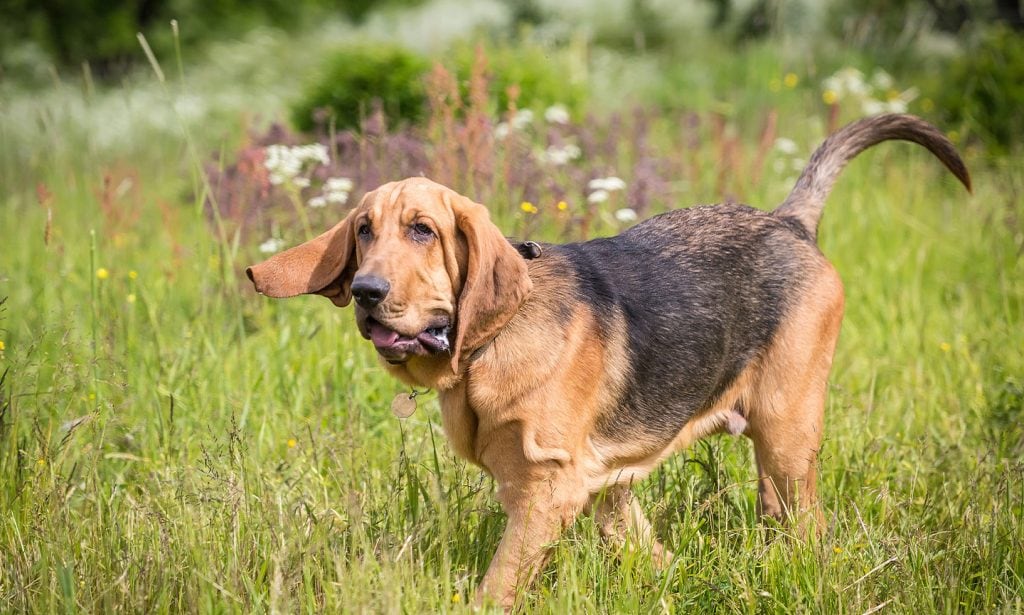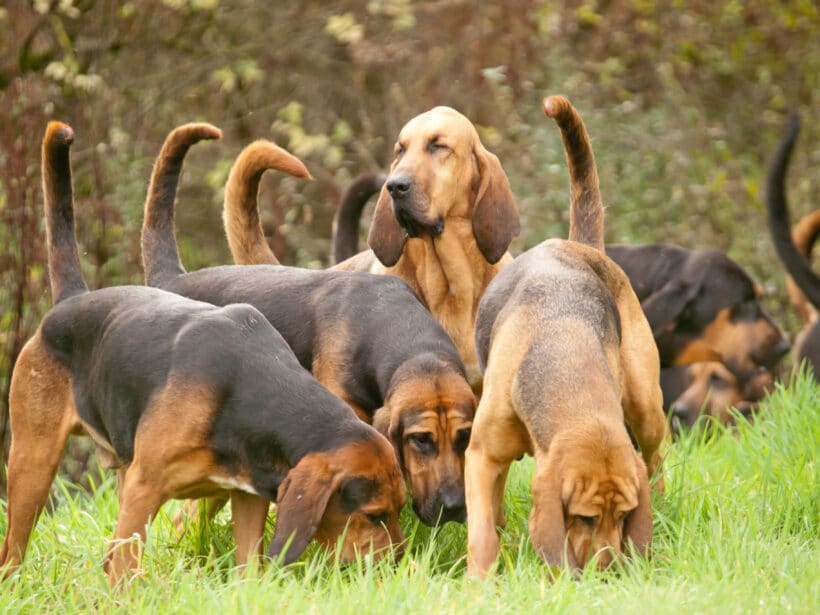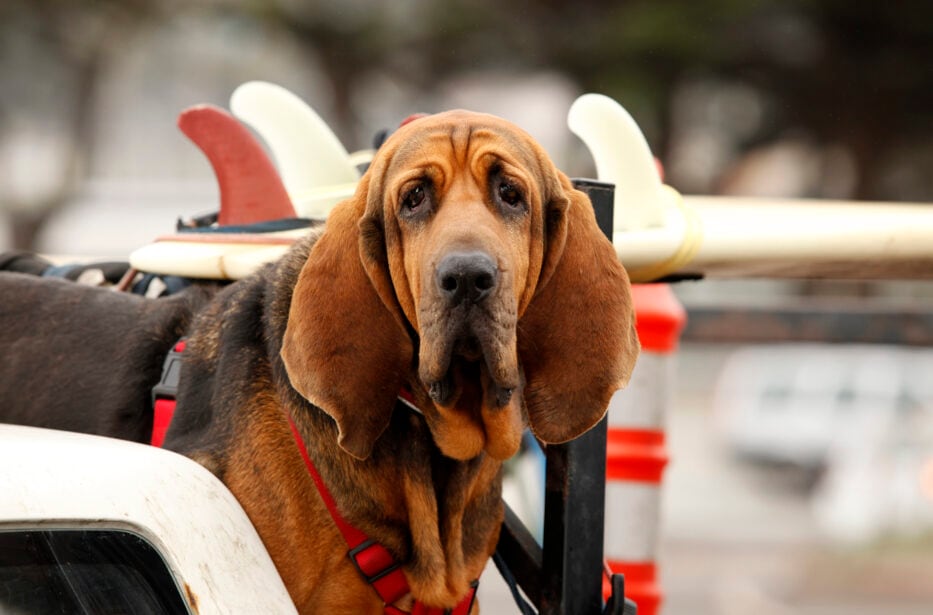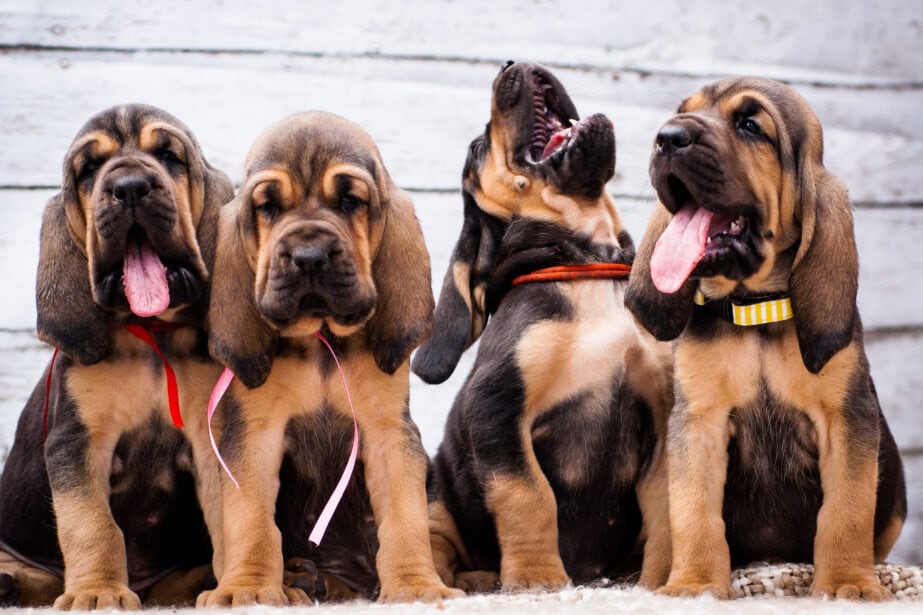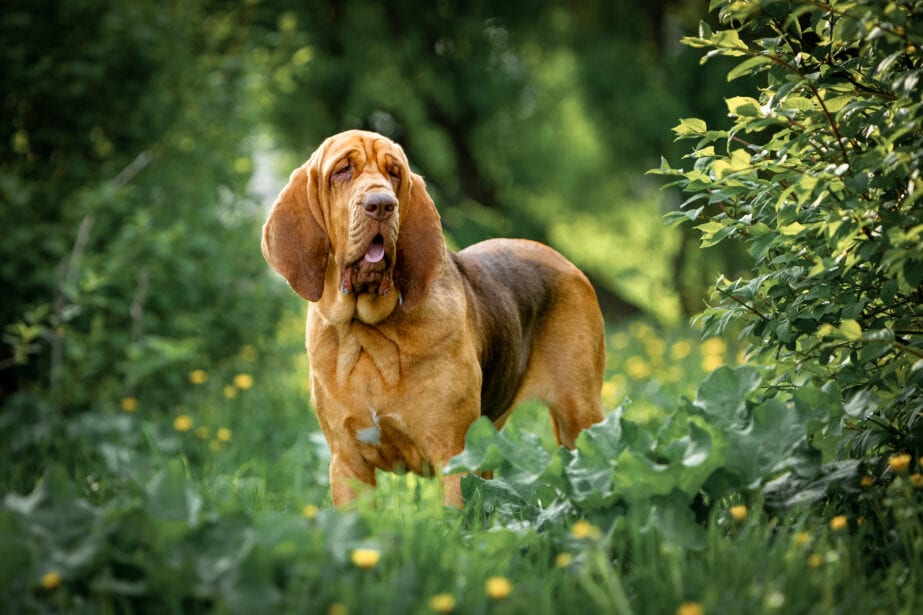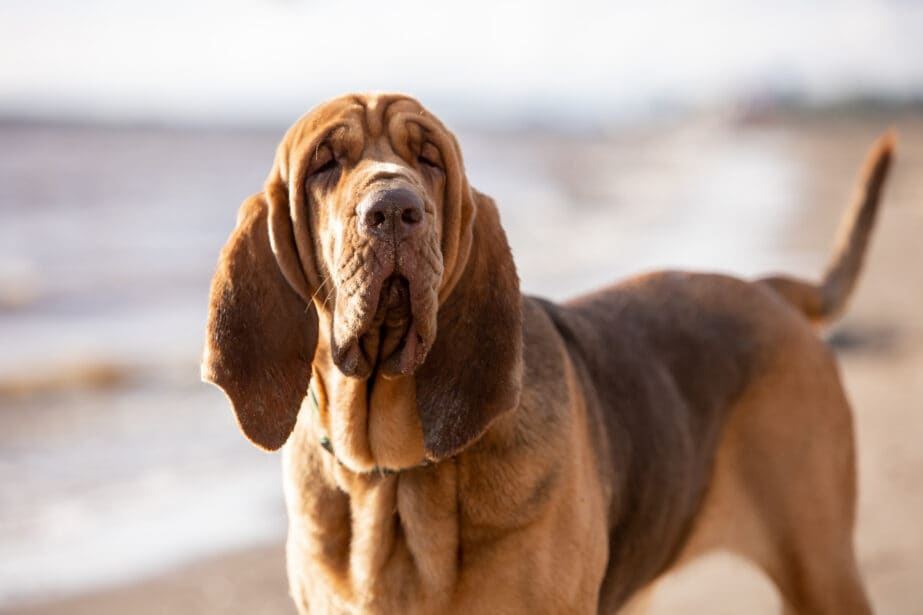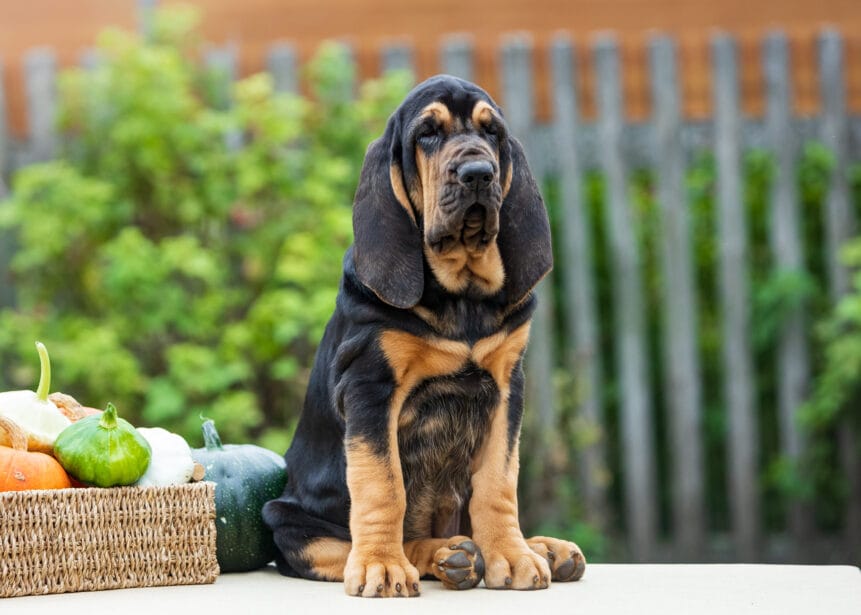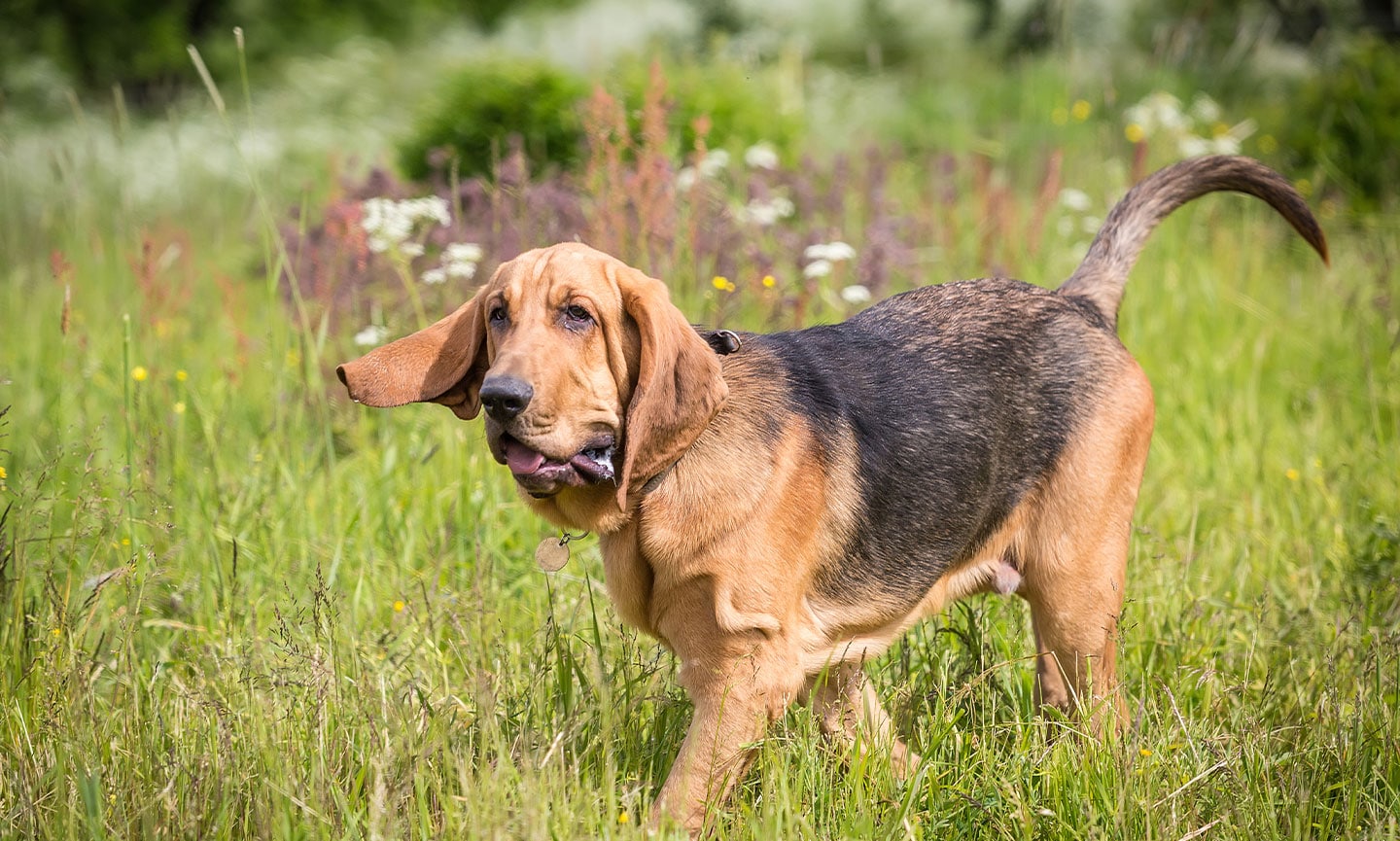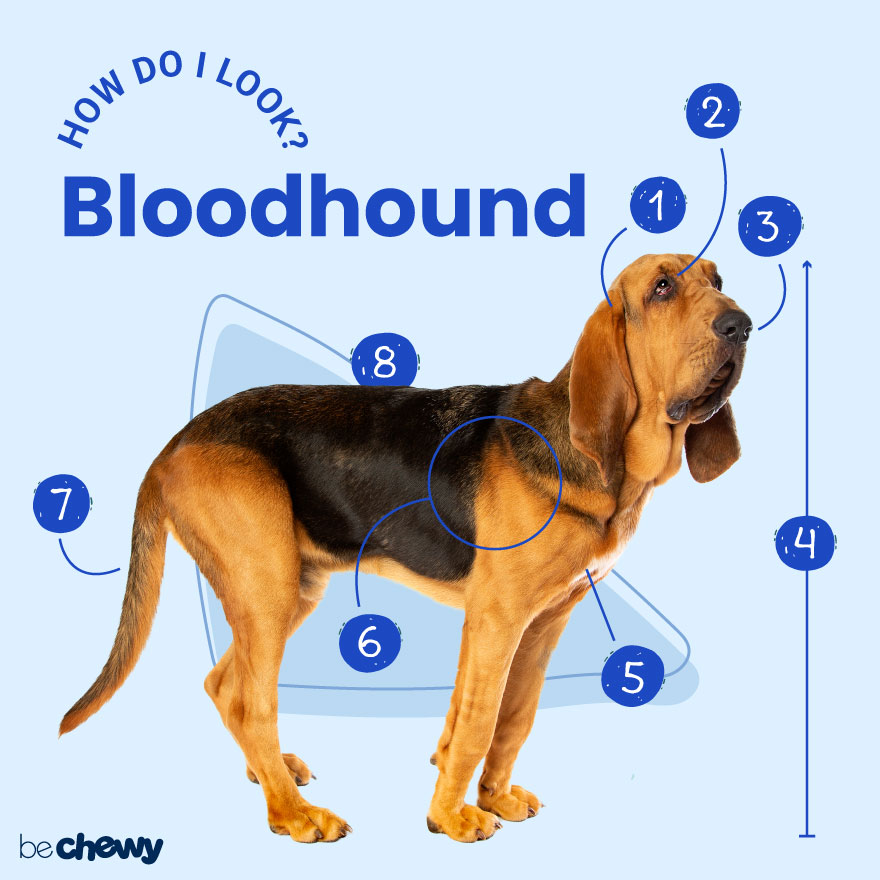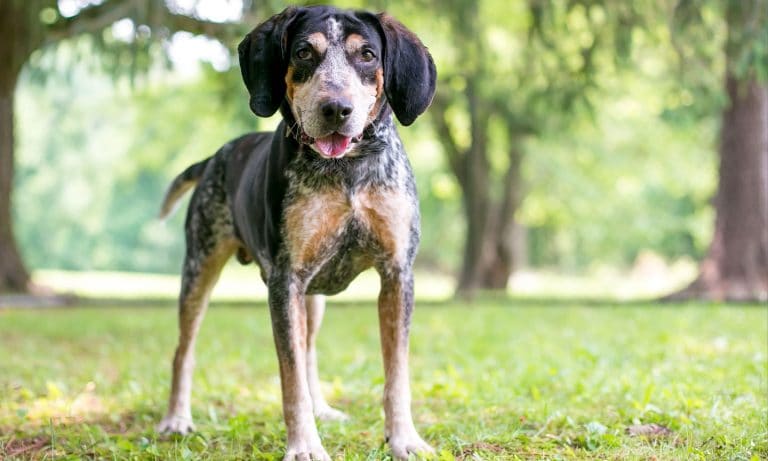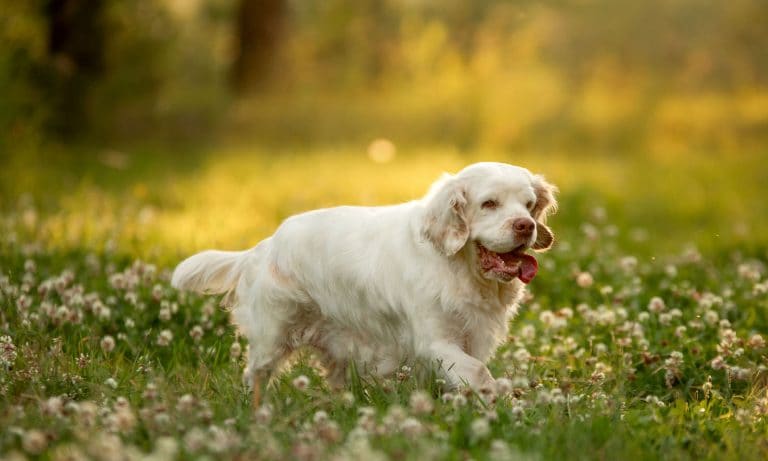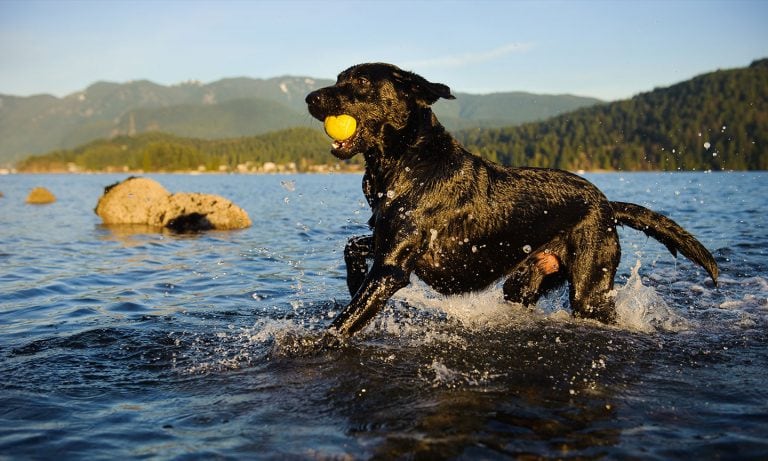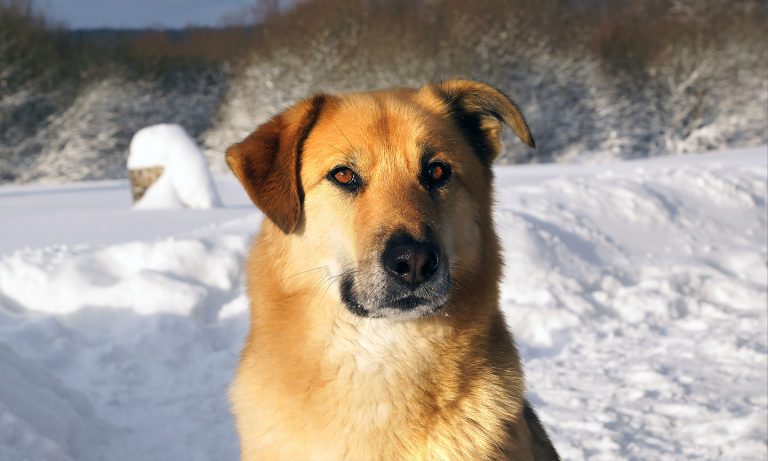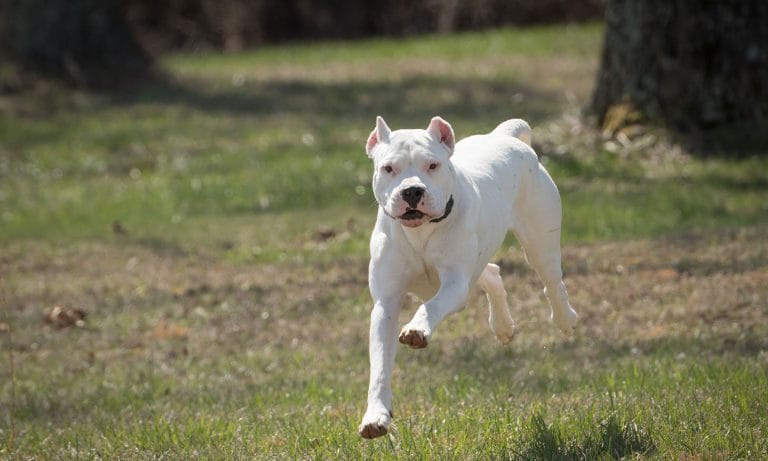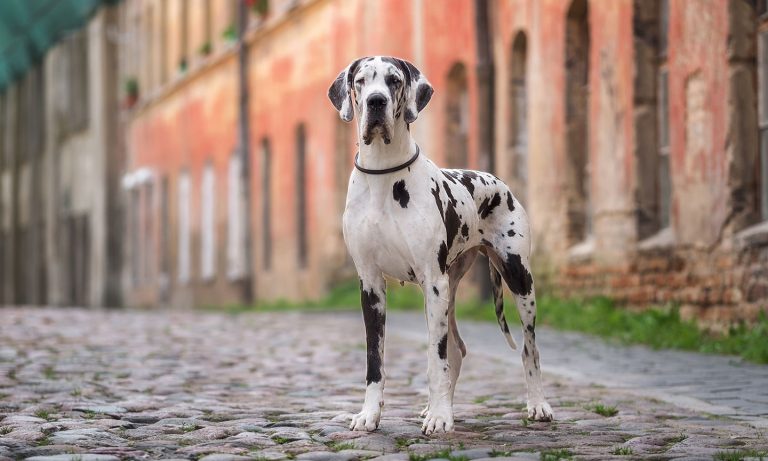Bloodhounds are the detectives of the dog breeds. Their excellent sense of smell and high energy reserves have landed them jobs as trackers in police departments on both sides of the Atlantic. When Bloodhounds catch a scent, they won’t stop until they find the source. But beneath their rough and tumble exterior, Bloodhounds are secret softies who love family time. (Sort of like that stoic friend who you sometimes catch crying at a romantic comedy.) This dog breed is a great reminder to pursue your passions with dogged determination, yet carve out a little time to hang on the porch and watch the sun set with your BFF.
Breed Snapshot
Temperament:
DeterminedIndependentEnergeticCoat Color:
Black And TanLiver And TanRed
Best For
Bloodhounds are exceptional scent trackers with a gentle demeanor. They need ample exercise and mental stimulation, making them ideal for active families seeking a devoted and patient companion.
Bloodhound Temperament
“A nose with a dog attached” is a common way to describe a Bloodhound. Their sense of smell is extraordinary, and their nose is what they use to navigate the world around them. This trait can’t be trained out of them; your Bloodhound has access to an entire world that you can’t see (or smell), and they will go where their nose takes them.
When not in hot pursuit of a scent, the Bloodhound breed can be laid-back members of the family. But just like people, their personalities can differ: Some are so high-energy that they’re seemingly always on the move, and others are happy to spend some downtime curled up on the rug. You can help them expend their energy by letting them romp by themselves in the backyard (as long as the yard is fenced). They’re also eager to go on hikes or walks with you. Just remember, when they catch a scent, nothing stands in their way—and they are off! (They look like they’re at Mach speed when they go.) For this reason, make sure any dog walker (professional or pint size) has a firm grasp on the leash!
With their sturdy size and high energy levels, they may accidentally knock over toddlers, but their temperament is very low-key. While they get along great with other animals and people, they may sometimes be shy, so it’s a good idea to start socializing your Bloodhound puppy while they’re young.
A Bloodhound can be slower to mature than other breeds. This isn’t code for “unintelligent,” but it does mean that housebreaking and mastering commands (like sit, stay and come) may take more time for them than other pups. Be consistent and kind and make sure everyone is on the same page when it comes to rules of the house—inconsistency will confuse a Bloodhound, and they may decide to make up their own rules instead. Bloodhounds do best when they know exactly what to expect from the people in their family.
How to Care for a Bloodhound
Bloodhounds require a moderate level of care from their people. While not as high maintenance as a Shih Tzu when it comes to grooming, they do require regular brushing, and you’ll need to keep their loose skin and facial wrinkles clean. Their high energy and strong-willed nature also translate to a good deal of time spent training and exercising them, but not as much as, say, a Border Collie. Of course, any time you spend with your Bloodhound is time well spent.
Bloodhound Health
Bloodhounds have a life expectancy of 10 to 12 years, but, like any breed, are prone to certain health issues that are cause for concern. Knowledge is power and knowing your pup’s potential health risks can help you give your dog the longest and healthiest life possible.
- Gastric Dilation Volvulus Complex (GDV): Also known as bloat, GDV is a life-threatening medical emergency. It occurs when the stomach fills with gas and twists on itself. Symptoms include abdominal pain, pacing, retching without vomiting (dry heaving), and a distended belly. To help prevent your pup from getting this condition, feed your dog smaller meals throughout the day and use a slow feeder to keep them from eating too quickly. Keep the food bowls on the floor (don’t elevate them), and don’t exercise one hour before or after meals. However, even if you do all those things, there may be a genetic component. Contact your vet immediately or go to the closest veterinary ER if you think your dog is suffering from GDV.
- Foreign Object Ingestion: Bloodhounds will find—and eat—anything. Yup, that includes your underwear and those decorative rocks on your coffee table. They’re also good at finding and opening cupboards and eating foods off the “never eat” list, so make sure to Bloodhound-proof your home and see your vet ASAP if anything appears to have gone missing. While some foreign objects pass naturally, your vet will want to examine and x-ray your pup if they eat something that may need surgery to remove.
- Hip and Elbow Dysplasia: Dysplasia is a common joint issue for dogs, most often in the elbows and the hips. It occurs when the joint doesn’t fit together properly, causing pain, limping and mobility issues. Some dogs may have a genetic propensity for dysplasia but there are no genetic screening tests. This is a progressive disease, meaning it gets worse, so early detection is key. Maintaining a healthy weight and exercise routine may minimize clinical signs and improve the pet’s quality of life. It can be treated with medication, physical therapy, weight reduction and, in some cases, surgery.
- Skin Issues: Those deep, adorable folds in your Bloodhound’s face can lead to some skin conditions, including dermatitis. This condition occurs when moisture is trapped in the skin folds, causing redness and irritation. Fortunately, it can be treated with medication and often prevented by keeping those folds clean and dry. Preventative weekly ear cleaning may also be beneficial for those floppy Bloodhound ears. Some Bloodhounds also have food allergies and may need to be put on a diet free of certain ingredients. Your vet will help you determine the best course of action.
Bloodhound History
We know very little about the Bloodhound’s early origins, but it likely begins around the Mediterranean, where ancient Greeks were in awe of their superior sniffing powers. But their name and distinctive look took root in Medieval Europe, where the Bloodhound history really begins.
These working dogs were essential members of a hunting pack, and they were bred and treated with reverence on the grounds of medieval French monasteries. Bred by monks, these dogs were originally called “blooded hounds” because they came from aristocratic families. (For the rest of us who watch too many movies, no, they did not get their names because they’re quick to pick up a trail of blood in the woods.) Later, their name evolved into “Bloodhounds.” It is believed that William the Conqueror brought these pups with him from Normandy when he conquered England in 1066.
The pup’s potential for police work did not go unnoticed. By the turn of the 19th century, English police units began using these nose-first pups to find criminals. Law enforcement agencies around the world took notice, and today, a Bloodhound’s trailing results are acceptable in almost any court of law. Bloodhounds were used by police departments throughout the 20th century, but over time, they became less popular as police forces turned to “multi-use” breeds such as German Shepherds, which, in addition to tracking, can be trained to provide personal protection and backup.
But because Bloodhounds are good with kids, they can be excellent in search-and-rescue cases, as they pose little threat to the people they find. The American Kennel Club recognized the Bloodhound in 1885 and is part of the Hound group. Today, you can expect to pay $600 to $1,200 or more for a purebred Bloodhound puppy. But for that price, you’re likely getting a pup who’s been screened for health and temperament issues and may come with pedigree papers. You can find reputable breeders on the AKC’s site. If you’d like to adopt your pup, contact Bloodhound rescues, look for the breed at your local animal shelter, or search Chewy’s database of adoptable dogs in your area.
FAQs
Do Bloodhounds shed?
Yes, Bloodhounds shed, but the amount of shedding depends on the season (you may see more in the spring and fall) and the individual dog. Regular grooming and a really good vacuum can minimize shedding nuisances in your home.
Are Bloodhounds good pets?
Yes, Bloodhounds make good pets. Well-socialized and trained Bloodhounds are great with kids and families as long as there’s plenty of room for them to exercise and
lounge. Be sure to put all your food (and everything else) out of your pup’s reach. They’re known to sniff out and eat everything.
What are the most common bloodhound mixes?
- Bloodhound-Labrador mix (Labloodhound)
- Bloodhound-Mastiff mix (Brazilian Mastiff)
- Bloodhound-Great Dane mix(Great Hound)
- Bloodhound-Poodle mix (Bloodhound Poodle)
- Bloodhound-Boxer mix (Bloodhound Boxer)
- Bloodhound-Rottweiler mix (Bloodhound Rottweiler)
Note: These are not purebred dogs but mixed breeds.
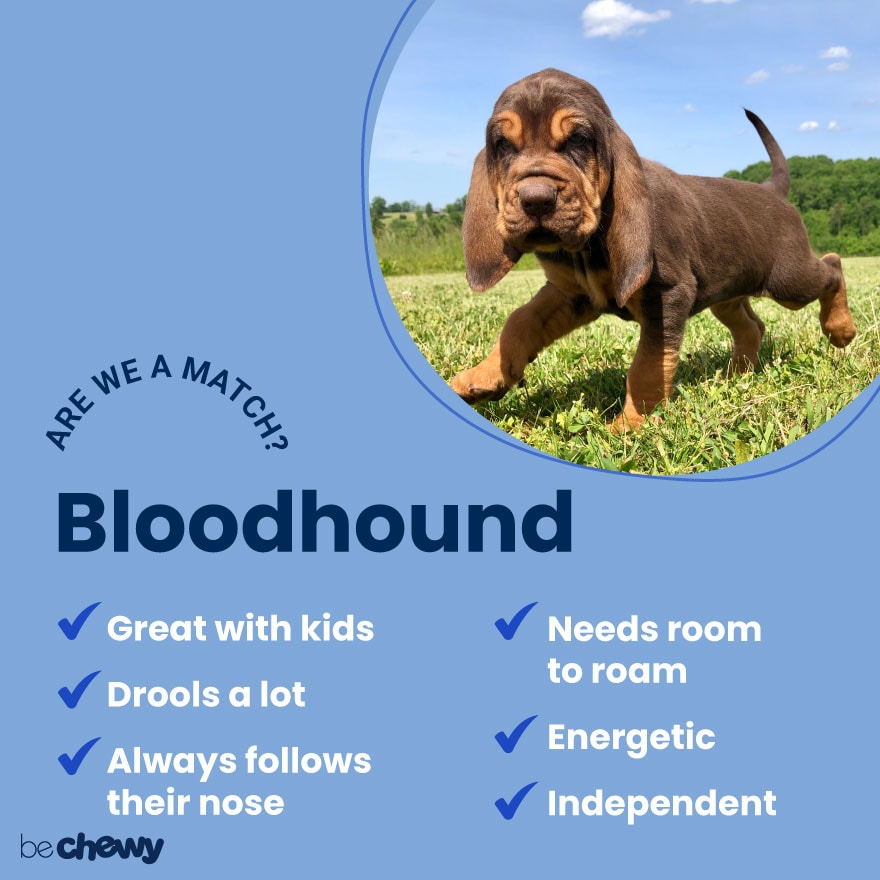
Top Takeaways
High energy, independent and with a love as deep as their drool puddles, the Bloodhound breed is a roll-with-the-punches pup who really takes pleasure in being a dog. A Bloodhound will remind you to enjoy the simple things in life, pay attention to the world around you and pursue your passions (just watch a Bloodhound on a scent trail for inspiration). The Bloodhound is the guru to guide you to a better you—with a few “stop-and-smell-the-flowers” (or stinky socks) detours on the way, of course.
Expert input provided by veterinarian Kate Knutson, DVM, owner of Pet Crossing Animal Hospital in Bloomington, Minn., and Sparky Serka, AKC certified trainer at The Puppy Academy in Hermosa Beach, Calif.
Breed characteristic ratings provided by veterinarian Dr. Sarah J. Wooten, DVM, CVJ, a veterinarian at Sheep Draw Veterinary Hospital in Greeley, Colorado; dog trainer and behavior consultant Irith Bloom, CPDT-KSA, CBCC-KA, CDBC, owner of The Sophisticated Dog, LLC, in Los Angeles; and certified animal behavior consultant Amy Shojai, CABC, in Sherman, Texas.
The health content was medically reviewed by Chewy vets.

Search for Adoptable Bloodhounds Near You
Female Names
- Daisy
- Ruby
- Dixie
- Lucy
- Bella
- Jolene
- Ellie Mae
- Penny
- Stella
- Maggie
Male Names
- Copper
- Hank
- Duke
- Boone
- Moose
- Otis
- Ruger
- Clyde
- Red
- Bo
Share:
